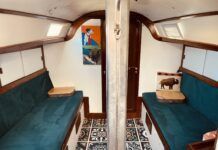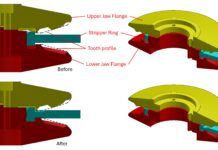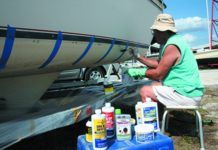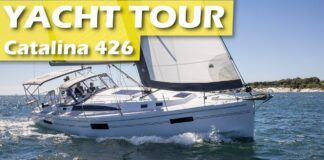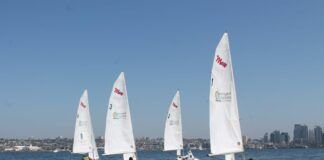
Scandvik Marine (www.scandvik.com) recently released a new compact LED spreader light. The successor to the Scandvik spreader lights we tested in the August 2013 issue, the new light is available in flush mount or bracket mount. It is waterproof, features two 5-watt Cree LEDs, and draws less than 1 amp. It is rated for 500 lumens and has a 120-degree beam angle.
The biggest differences between the new lights and those we tested are the housing and the finish. The new light has a durable composite housing made of DuPonts Zytel and has no visible screws. This white finish is resistant to heat, UV rays, and cleaning agents.
The older lights that we tested were powder coated, and we noted coating failure after less than a year of use. According to Scandvik President Sebastian Blackman, this was because the makers paint factory skipped a step on a large batch of the spreader lights. In response, Scandvik redesigned the light to avoid powder coating and instead uses the Zytel housing.
The MSRP for the new compact spreader light is $78 for the bracket mount version and $75 for the flush mount.

Since our last large-scale field test of wind generators (see PS, July 2007 online), our Budget Buy pick, the KISS high-output wind generator, has switched builders and has seen many upgrades.
Hotwire Enterprises (www.svhotwire.com) has been making the KISS wind gen since 2011, but according to Hotwires John Gambill, the company recently sold the rights to build it to CruiseRO Water Makers in California (www.cruiseROwater.com). There are likely to be more updates to the KISS as the new builder begins construction, but the current production model (as of March 2014) already features a slew of upgrades over the model we tested in 2007. Here is a brief rundown of those product updates.
The U.S.-made, machine-wound stator is wound tighter and is more efficient. The original stators, made in Trinidad, were hand-wound and ended up with additional wire around the outside of the turns, which increased overall resistance. With 40-percent less resistance, there is more current output, according to Gambill. (The 2007 model we tested had slightly lower output averages compared to other large-diameter wind gens we tested in 2007.)
One of testers favorite features of the 2007 KISS wind gen was that it was easy to service in the wild. Now its even easier to work with: The stator is now clamped into the housing using longer screws that extend from the front to about 2 inches into the back of the housing with stainless-steel nuts inserted into divots in the housing. This is much stronger and easier to work with than the old system of embedded nuts in the fiberglass.
The control box has been upgraded from a 30-amp rectifier to a 50-amp rectifier; makers are in the process of changing this to a new electronic rectifier. In testing, it showed a 20-percent increase in amps at low wind speeds, a lower start-up speed, and a very slight increase at higher wind speeds, Gambill explained.
The U.S.-made rotor shafts are more accurately machined and smoother running. Hotwire put helicopter tape on the leading edge to protect against wear.
The housing is now a vinylester resin with a 250-degree rating (versus the original polyesters 170 degrees). This means the generator can operate at a higher temperature and higher wind speeds before going into freewheel, the most common complaint about the original KISS. The housings also now have a thermal additive that increases the heat transfer through the housing.
Hotwire has replaced the original plastic pole cap and graphite bushing with a yaw bearing consisting of two stainless-steel needle bearings and a Delrin thrust washer, so the generator will turn more easily into the wind. They also changed the mounting system so that it is easier to install and remove and is more logically intuitive.
Raymarine (www.raymarine.com), a major marine electronics manufacturer, has teamed up with digital navigation-provider Jeppesen (www.c-map.com), to now offer support for C-Map 4D cartography in Raymarines range of LightHouse II-based multifunction displays. The Raymarine line of Dragonfly Sonar/GPS will also support C-Map.
The C-Map cartography comes as part of the regular Raymarine software update program and will be available in LightHouse Release 13 as a free download.
With the addition of C-Map, users can now choose between three cartography options in one multifunction display; Raymarines range of LightHouse II raster charts (updated on a quarterly basis), Navionics cartography (see PS, February and March 2012 online), and now C-Map by Jeppesen charts.

















